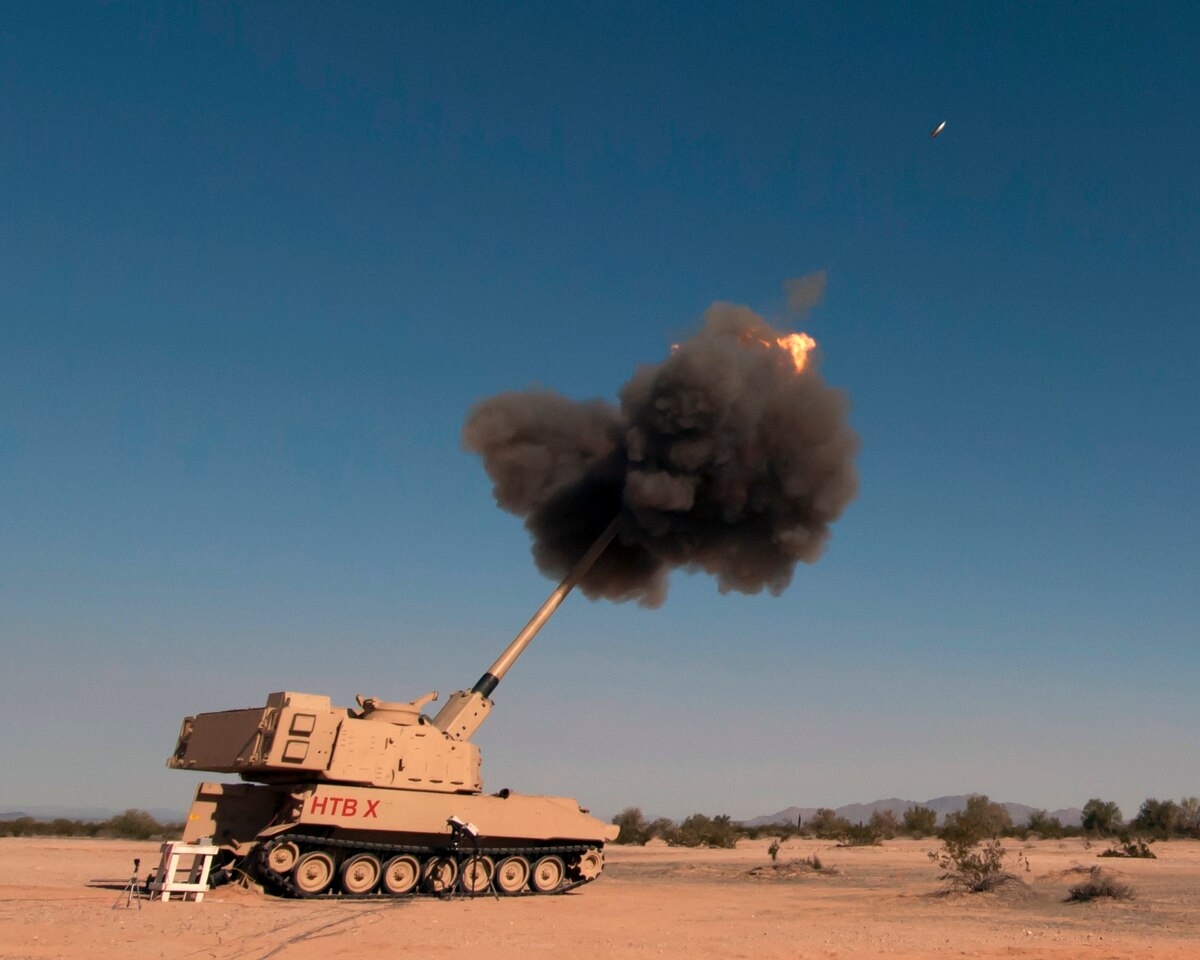The U.S. Army’s Extended Range Cannon Artillery (ERCA) system under development hit a target 43 miles away or 70 kilometers on the nose at Yuma Proving Ground, Arizona, Dec. 19, using an Excalibur extended-range guided artillery shell. In this test, the U.S. Army took three shots. The first shot came up short due to very high head winds at a high altitude and the second shot had a hardware failure, but the third shot proved that the service is getting closer to dialing in on the right balance between propellant, projectile design and other factors that play into achieving greater distances. In March, the Army inched closer to the ultimate goal of 70 kilometers when it took two shots, both reaching 65 kilometers in range.
Each munition fired during Saturday’s event had slight design differences to address how best to design and prepare the round to absorb the high-pressure and force of being fired at 1,000 meters per second from a gun tube of ERCA’s caliber. The first shot, due to the winds, fell short by roughly 100 meters, sounds like a lot, but is closer when considering when the munition has to travel 70,000 meters. The Army knew the first shot would come up short due to wind, but wanted to take it anyway in order to learn from it. The second shot, the Army had modified the hardware configuration and experience a hardware failur. Specifically, the Army added an isolator for the inertial measurement unit, which is essentially a shock absorber to counter the pressure spike in the chamber.
“This demonstration is not a destination. This is really just a waypoint in our ongoing campaign of learning as we work to really realign U.S. supremacy in cannon artillery. It’s definitely a big knowledge point for us today. Not only did the test show the design robustness of a current fielded projectile to demonstrate lethality at extended ranges, it did so while maintaining accuracy, marking a major milestone in support of (Long Range Precision Fires) objectives of achieving overmatch artillery capability in 2023” said Col. Anthony Gibbs, Project Manager for Combat Ammunition Systems.

Providing longer range than that of potential adversaries, is a significant combat multiple for maneuver commanders and the Long Range Precision Fires Cross Functional Team (LRPF-CFT) was established to tackle that objective. Their mission includes increasing lethality, improving rates of fire, and enabling deep fires to shape the battlefield and set conditions for the brigade combat team close fight. Multiple efforts including new propellant charges, an Extended Range Cannon Artillery (ERCA) system, multiple projectiles with varying capabilities, and target identification and tracking systems, are under development to increase range and reduce the time from target identification to effects on target.
The U.S. Army will continue its soldier-centered design effort to include ensuring the configurations for the propellant and charge are something the soldiers can handle and that it doesn’t affect the rate of fire. The team obviously don’t want to give them a configuration that’s going to cause them to have to shoot slower. And the configuration of projectiles and propellant also has to be optimally stowed in a howitzer to maximize the number of kills onboard. The US Army wants to smooth the ordeal of firing artillery. The U.S. Army is looking to nail down its design in 2021. The Army is pushing to get an urgent material and safety releases to field the ERCA system in 2023.
The U.S. Army is racing to extend artillery ranges on the battlefield to take away advantages of high-end adversaries like Russia. The ERCA cannon, when fielded, should be able to fire and take out targets from a position out of the range of enemy systems. The ERCA cannon takes an M109A7 Paladin Integrated Management (PIM) howitzer chassis and replaces the 39-caliber gun tube with a 58-caliber, 30-foot one. Combined with Raytheon-made Excalibur munitions and an XM1113 using supercharged propellant, the Army has been able to dramatically boost artillery ranges. Additionally, the Army demonstrated the Excalibur, as it exists in the inventory now, is survivable with a higher muzzle velocity and pressures to get to 70 kilometer ranges and hit targets directly.

